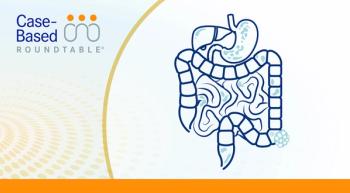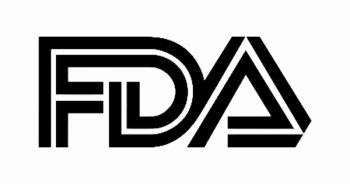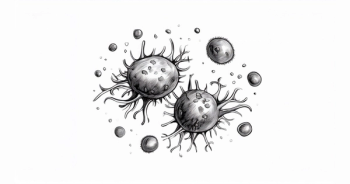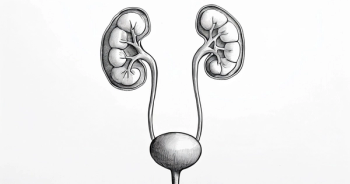
Selinexor Shows Promise for Enhancing CAR T Outcomes in Myeloma
Selinexor (Xpovio)-based regimens may offer a novel strategy to optimize outcomes with B-cell maturation antigen (BCMA)-directed chimeric antigen receptor (CAR) T-cell therapy in relapsed/refractory multiple myeloma (RRMM), according to a growing body of preclinical and real-world clinical evidence.1
Selinexor, an XPO1 inhibitor, appears to enhance T-cell fitness, modulate the tumor immune microenvironment, and preserve cytotoxic function during critical phases preceding CAR T infusion, including both holding and bridging therapy.
Real-world data presented by the US Myeloma Immunotherapy Consortium demonstrated that selinexor-based bridging therapy prior to idecabtagene vicleucel (ide-cel; Abecma) yielded a median progression-free survival (PFS) of 9.8 months (95% CI, 4.4-13.9), comparable to that achieved with immunomodulatory agent-based bridging. The use of bridging therapy in the full study cohort showed a median overall survival (OS) of 13.8 months (95% CI, 11.97 to not reached [NR]) for the group that received bridging therapy compared with NR in the no bridging therapy group (P =.002).
Additionally, in a cohort of heavily pretreated patients (median ninth-line CAR T), selinexor-based regimens used immediately prior to CAR T were associated with a median PFS of 8.0 months (IQR, 3.1-39.5) and OS of 35.9 months (IQR, 14.2-NR). Among these, the most common selinexor combinations were with bortezomib (Velcade)/dexamethasone and carfilzomib (Kyprolis)/dexamethasone. The majority of patients (75.6%) received selinexor at weekly doses of 80 mg or lower.
In this analysis, patients who received selinexor immediately prior to CAR T had a reduced risk of disease progression (HR, 0.40) and a dramatically lower risk of death (HR, 0.08).
In a retrospective analysis of 7 patients who received selinexor-based therapy immediately prior to apheresis, all achieved a very good partial response or better following CAR T-cell infusion, yielding a 100% overall response rate. Selinexor may also mitigate the negative immunologic impact of other agents such as bortezomib when used in combination during the bridging window.
Optimizing Pre-CAR T Strategies With Selinexor
Despite the success of ide-cel and ciltacabtagene autoleucel (cilta-cel; Carvykti), autologous CAR T-cell therapy in RRMM is not always curative, and early nonrelapse mortality and limited durability of response remain challenges. One key area of optimization is in the preinfusion phase, where therapy is often needed to control disease while awaiting CAR T manufacturing. Bridging therapy plays this role but must avoid impairing T-cell quality or promoting immunosuppression.
“If there’s something to remember from this, it is to avoid alkylators as much as you can before you send patients for CAR T-cell collection,” he added. This guidance reinforces the rationale for considering nonalkylating agents such as selinexor during holding therapy to better support CAR T readiness.
However, the optimal bridging approach remains undefined. Both the American Society for Transplantation and Cellular Therapy and the International Myeloma Working Group have recently highlighted selinexor as a potential candidate due to its immunomodulatory effects.
Mechanistic data support selinexor’s ability to foster a tumor-permissive immune landscape. Preclinical studies show selinexor activates CD8-positive (CD8+) T cells and natural killer (NK) cells while avoiding T-cell exhaustion. In murine models, selinexor downregulated LAG3 and PD-1 expression on tumor-infiltrating CD8+ T cells, suggesting it preserves cytotoxic potential. In human bone marrow samples from patients treated on the STOMP trial (NCT02343042), selinexor increased CD8 and granzyme B expression without upregulating inhibitory checkpoints such as PD-1, CTLA4, or LAG3.
Selinexor also activates NK cells by disrupting the inhibitory NKG2A:HLA-E axis. Additionally, it promotes antitumor macrophage polarization from M2 to M1 phenotypes. The compound reduces the levels of proinflammatory cytokines such as IL-6 and TNF-α and suppresses myeloid-derived suppressor cell function and neutrophil extracellular trap formation, further improving immune surveillance.
Of particular interest, selinexor may upregulate BCMA expression on plasma cells and enhance CAR T targeting. In vitro, low-dose selinexor has been linked to improved CAR T cytotoxicity and increased multiple myeloma cell immunogenicity through epigenetic modulation.
Khouri noted that while bridging therapy is often necessary, it must be used judiciously. “With bridging therapy, we can do whatever we want, especially if someone really needs therapy. We just have to do whatever it takes to keep them going until we can infuse the cells.”
Clinical Implications and Future Directions
Clinical and mechanistic evidence suggests that selinexor may play a supportive and potentially enhancing role in CAR T-cell therapy. Selinexor appears to preserve or enhance T-cell function, a critical consideration given the dependence of CAR T efficacy on robust T-cell activity.
Given its immune-enhancing properties and potential to improve the tumor microenvironment, selinexor may support the manufacture of more effective CAR T products and improve response durability. Ongoing prospective trials will be essential to clarify its role.
Overall, selinexor represents a rational and potentially impactful option for holding and bridging therapy in patients with RRMM scheduled for CAR T. Its ability to enhance immune effector function while controlling disease supports further investigation in prospective trials.








































